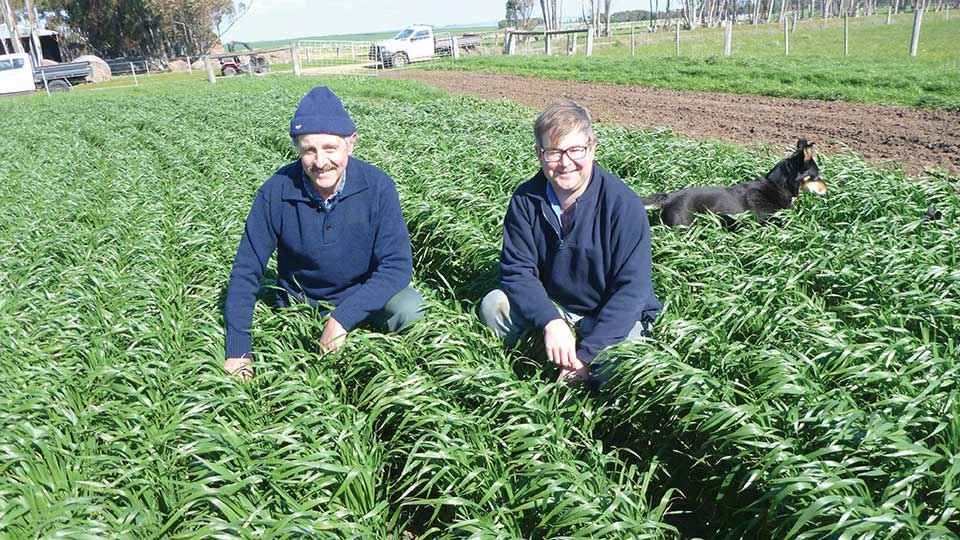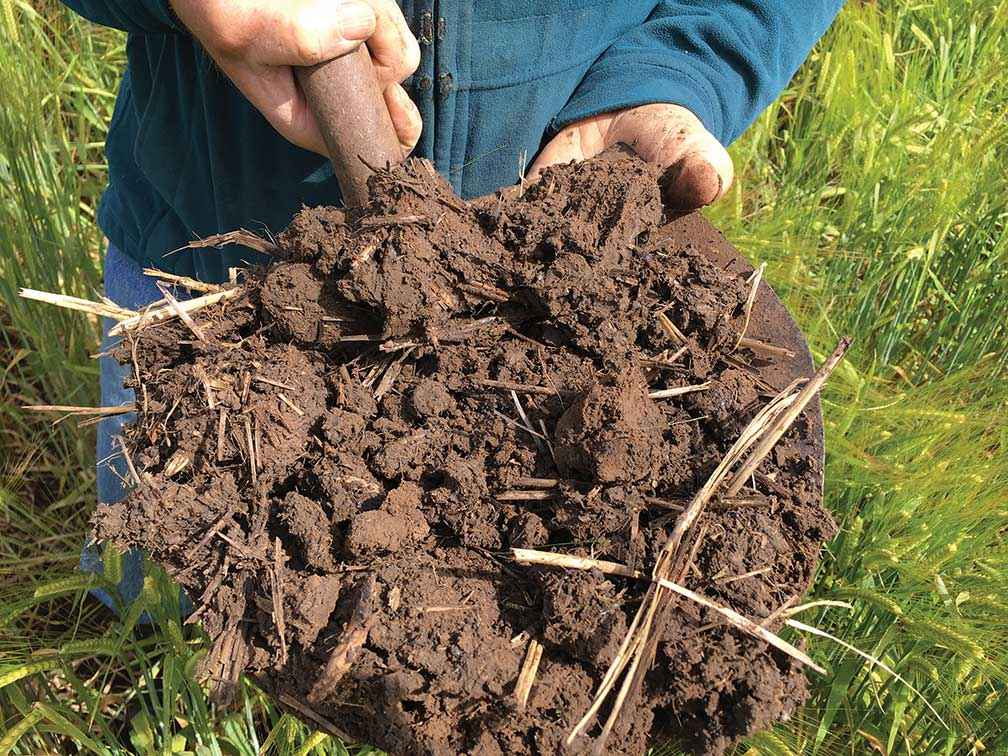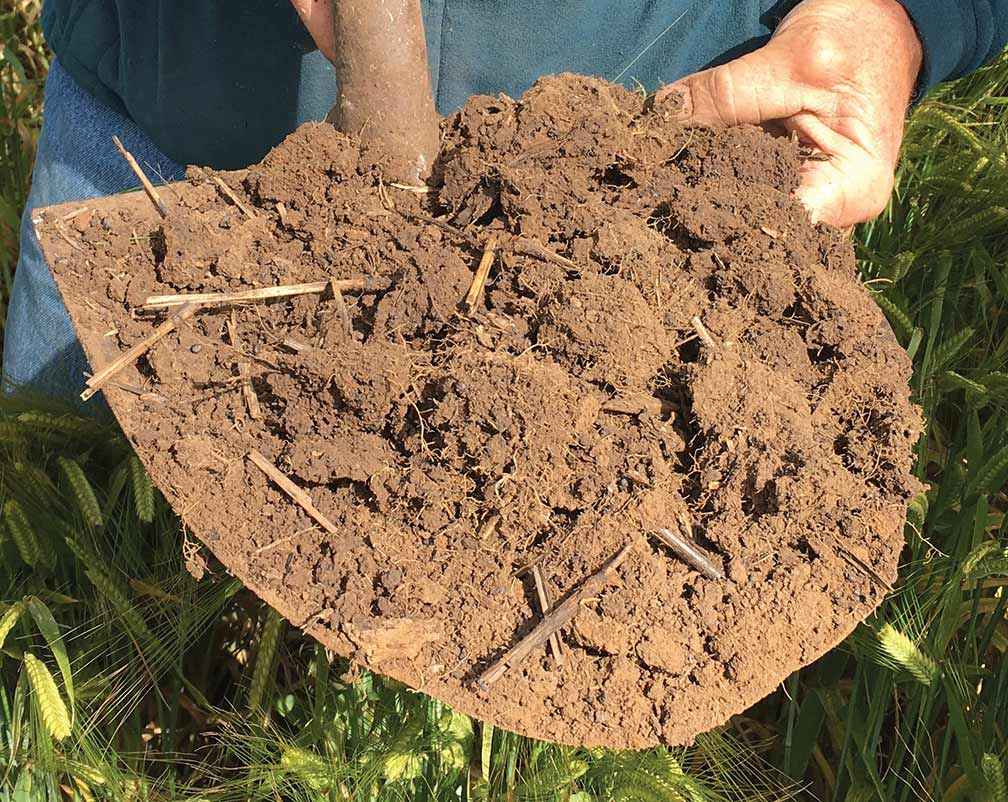Victorian Landcare Magazine - Spring 2018, Issue 73

Cundare-Duverney Landcare Group
Formed in 1994, the Cundare Duverney Landcare Group is part of the Corangamite Lakes Landcare area, which takes in the areas around Cressy, Lismore, Derrinallum and Beeac and extends south to Camperdown.
Formed in 1994, the Cundare Duverney Landcare Group is part of the Corangamite Lakes Landcare area, which takes in the areas around Cressy, Lismore, Derrinallum and Beeac and extends south to Camperdown.
“Traditionally it was predominantly a grazing area with some cropping, but over the past 20 years there has been a rapid conversion to continuous cropping,” said Bill Charles of Cundare Duverney Landcare Group.
“This impacts soil condition and raises the question of what to do with the cereal stubbles. Presently cereal stubbles are mostly burnt, which leads to a loss of soil carbon and production of greenhouse gases, and it is becoming logistically more difficult to burn due to tighter regulations,” Bill said.
To address this issue the group applied for and received funding from Landcare Australia’s Workplace Giving Program to trial methods to manage crop stubbles.
According to group president, Justin Alexander, research shows that soil carbon levels are declining under continuous cropping systems.
“Soil carbon is declining, even under no-tillage cropping systems. This could have significant impact on the health of our soils and we want to address it before it is too late,” Justin said.
Soils need adequate nutrients
Research by Clive Kirkby, CSIRO, has found that to increase soil carbon levels, crop stubbles must be incorporated into the soil with adequate nutrients available to enable soil microbes to decompose the organic material into humus.
A number of local farmers have tried stubble incorporation in the past, but the poorly drained clay soils, cold and wet winters, and heavy stubble loads resulted in poor decomposition of the stubbles. This caused blockages to air-seeders at sowing, increased incidence of slugs, snails and disease, and reduced crop yields. Consequently, many farmers abandoned the practice and reverted to burning cereal stubbles.

Above: A soil sample from the control plot.

Above: A sample of soil treated with extra nutrients.

Above: A soil sample treated with the biological blend.
The group trialled three treatments to assist decomposition of stubble incorporated into soil:
• adding extra nutrients (nitrogen, phosphorous and sulphur) to meet the biological demand of the microbial biomass required to decompose the stubble. This is based on the work of Clive Kirkby;
• addition of stubble digesters (beneficial fungi) to promote breakdown of cellulose in stubble to aid its decomposition;
• addition of a biological blend of stimulants (comprising a mixture of humic acid, nutrients and coal dust) and stubble digesters to promote microbial decomposition of stubbles;
• a control with only stubble incorporated.
Each trial treatment and control was four hectares in area, with the remainder of the paddock being burnt. The six tonne per hectare wheat stubbles were incorporated and trial treatments applied in February 2017. Good autumn rains provided sufficient moisture while soil temperatures were high enough to stimulate soil microbial activity to break down the stubbles.
According to Justin Alexander, by the time of sowing barley in May, the incorporated stubbles had decomposed sufficiently on all treatments and there were no problems with blockages to the air-seeder.
“We had minimal problems with slugs and snails, and no worse than elsewhere on burnt paddocks. There was an issue with herbicide efficacy, which we overcame. By about July we could see that the crop was struggling a bit for nitrogen on all plots except where we added the extra nutrients. We applied extra urea in July, then again in late August across all plots.”
“Soil carbon is declining, even under no-tillage cropping systems. This could have significant impact on the health of our soils and we want to address it before it is too late,” Justin said
Improved soil condition
A site inspection in October showed that almost all the stubble had decomposed on the biological blend and extra nutrients treatments, with very few larger fragments of stubble remaining compared to the control.
The soil was more friable with improved soil structure and better aggregation of soil particles, and it was less ‘cloddy’ than on the stubble digester treatment, control plot, and the rest of paddock.
The plot with extra nutrients yielded about 5.75 tonnes per hectare, while the two other trial treatments and the control area each yielded about 5.4 tonnes per hectare. The rest of the paddock where stubbles were burnt yielded about six tonnes per hectare.
Justin believes that despite the blanket application of extra mid-season nitrogen, the lower yields on treatments with no additional nutrition show that microbes robbed the crop of some of the midseason nitrogen to use in stubble decomposition.
“The higher yield and better soil condition on the extra nutrition treatment shows the benefit of extra nutrients in assisting stubble decomposition. In hindsight we could have increased our mid-season nitrogen application a bit on the treatments, and probably got towards a six tonne yield on the extra nutrient treatment but overall the result of the stubble incorporation is about as expected and we are happy with it.
“We are encouraged by the results and plan to do more stubble incorporation in the future using the added nutrients treatment, as it is relatively easy to spread a bit of fertiliser when we are incorporating the stubbles.
“The cost is somewhat offset by the value of nutrients lost by burning, and the long-term cost of declining soil health, which often requires increased inputs to maintain yields. We won’t rule out burning totally, but if we can reduce the amount or frequency of burning while improving soil health and maintaining yield, then it could be a win-win result,” Justin said.
"We are encouraged by the results and plan to do more stubble incorporation in the future using the added nutrients treatment, as it is relatively easy to spread a bit of fertiliser when we are incorporating the stubbles."
Rod Eldridge is the Landcare Facilitator of the Cundare Duverney Landcare Group. His position is funded through the Victorian Landcare Facilitator Program.
For more information email Rod at llpgrod@westnet.com.au
Access the magazine's index to search for other stories by author, title, and subject, here.